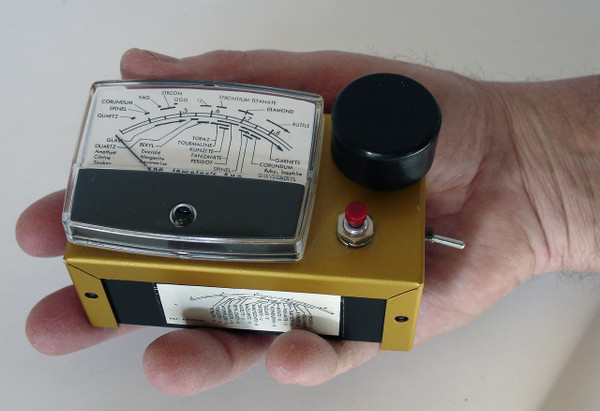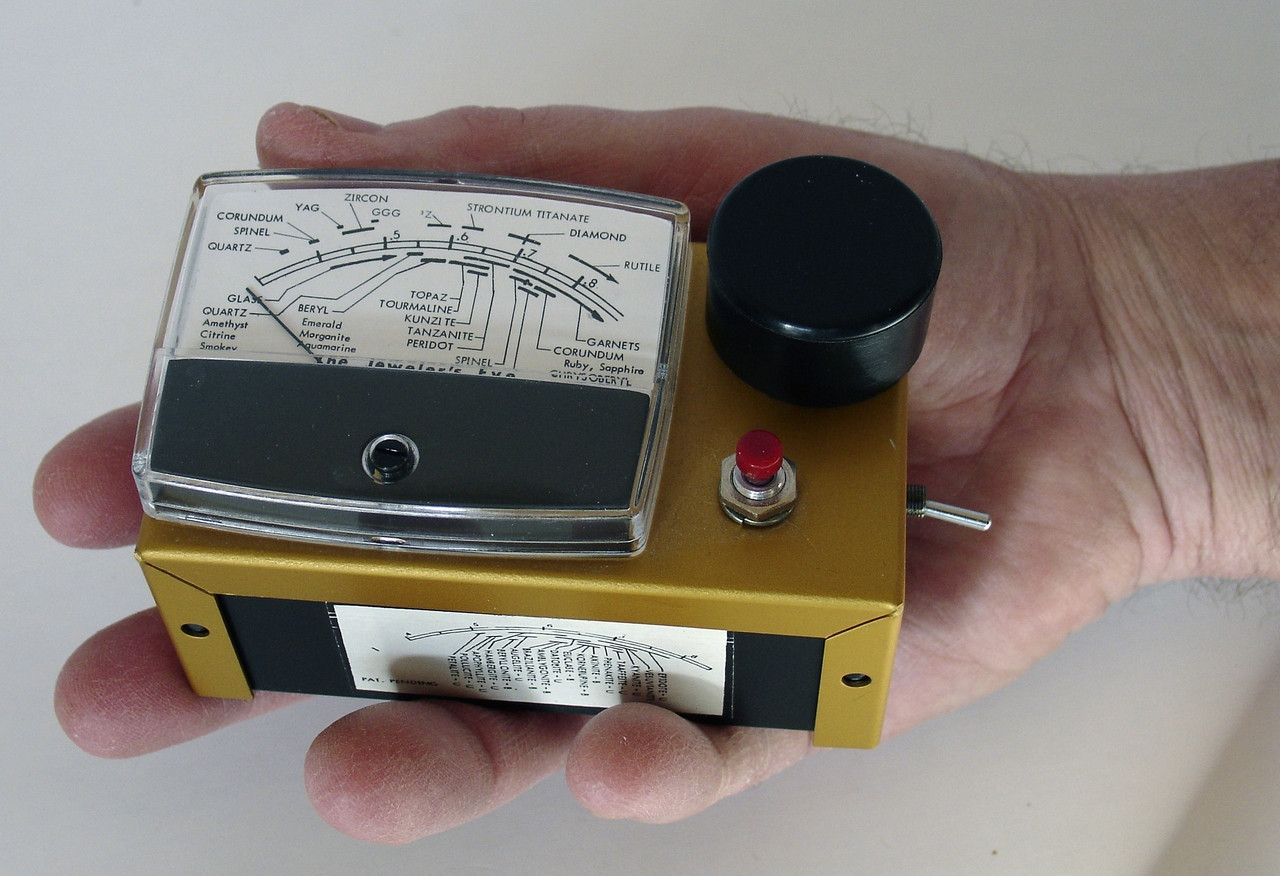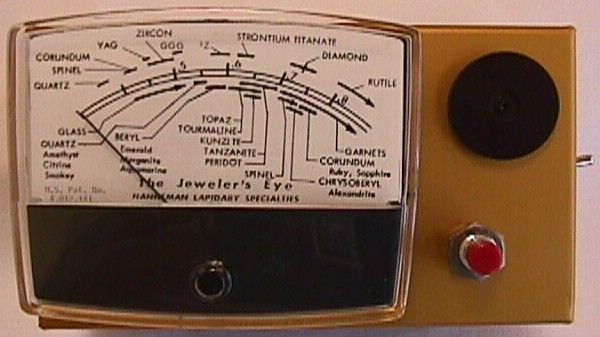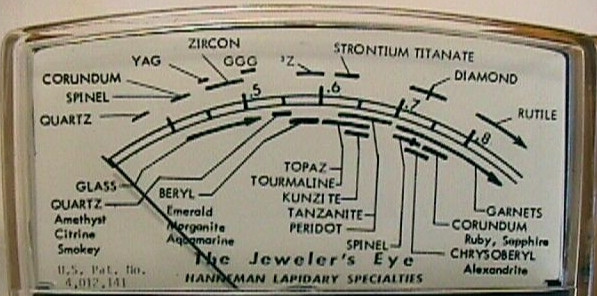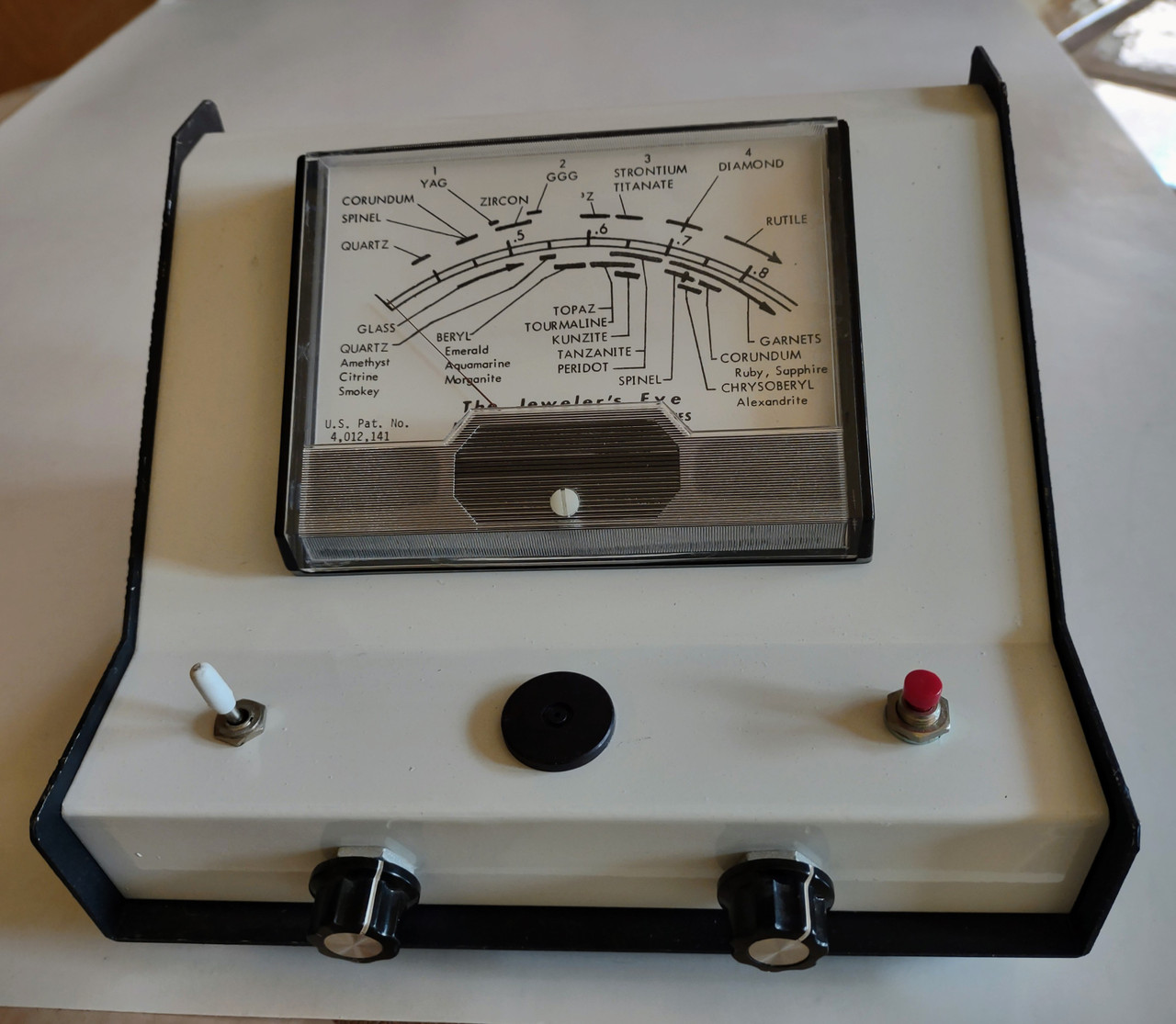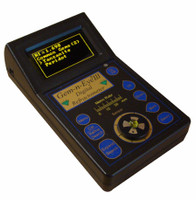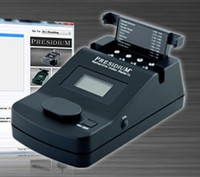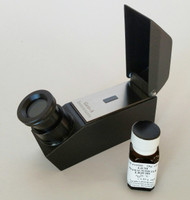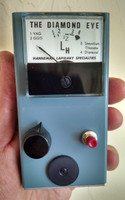- Shop All
- Mineral ID
- Gem ID
- Hardness
- Specific Gravity
- Scales/Balances
- UV Lamps
- Diamond Testers
- Gold Testers
- Geiger Counters
- Industrial
- Software
- Books
-
Product Description
Coming back! ... in the future
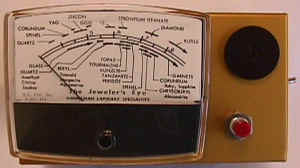 The Jeweler's Eye, designed by respected gemologist Dr. William Hanneman, is a type of Relative Reflectometer. It essentially measures the amount of reflection or luster of a gemstone relative to other gems, and reads out that reflectivity on a scale that is calibrated not only numerically, but by the variety of gemstone as well. The Jeweler's Eye will not necessarily tell you what your stone is, but it will tell you what it is not, and is an excellent tool to confirm a gemstone's identity.
The Jeweler's Eye, designed by respected gemologist Dr. William Hanneman, is a type of Relative Reflectometer. It essentially measures the amount of reflection or luster of a gemstone relative to other gems, and reads out that reflectivity on a scale that is calibrated not only numerically, but by the variety of gemstone as well. The Jeweler's Eye will not necessarily tell you what your stone is, but it will tell you what it is not, and is an excellent tool to confirm a gemstone's identity.To use the Jeweler's Eye, just center a clean and polished flat surface of a faceted gem, either loose or mounted, over the light sensor hole at the upper right of the unit, position the included light shield over the gem, and push the red button. The needle will then point to the gemstone or stones that equate to that level of reflectivity. You're done!
The light sensor hole has a diameter of 1/32", so any stone tested must not be so small that it could fall into the hole. But from a more practical standpoint, your stone should have a table facet of at least that 1/32" across.
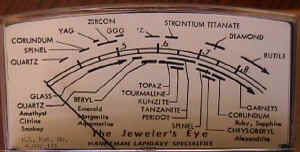 Here is a close-up of the meter so that you can read the name of common gemstones measured. These aren't the only stones that you can measure with the Jeweler's Eye, though. The bottom and side of the case display auxiliary scales for less common gems such as hambergite, kornerupine, and many more, over 45 in all.
Here is a close-up of the meter so that you can read the name of common gemstones measured. These aren't the only stones that you can measure with the Jeweler's Eye, though. The bottom and side of the case display auxiliary scales for less common gems such as hambergite, kornerupine, and many more, over 45 in all.The Jeweler's Eye is not a type of refractometer, yet its measurements bear many similarities thus. But unlike a critical angle refractometer that is limited to measuring gems with refractive indices not exceeding 1.81, the Jeweler's Eye can read high R.I. gems such as zircon, diamond, and its many simulants. The device incorporates a simple toggle switch on the right side to move between the lower scale and the upper scale where the high R.I. gems are found. (Synthetic moissanite, a popular diamond simulant of late, is not printed on the scale, but will read to the right of diamond as it has a higher luster.)
The Jeweler's Eye is completely self-contained and portable, operating on one 9 volt battery (included). It also comes with a padded carrying case, light shield, accessory kit with recalibration tool, and instructions for use. Designed to carry in your pocket, this instrument is only 2" x 2" x 4".
The Jeweler's Eye can not substitute for the accuracy of a critical angle refractometer for lower R.I. gemstones, but it does represent an all-in-one identifying tool for all faceted gemstones, and it comes with a 30 day money back guarantee. Plus, it is very easy to use, requires no messy damaging contact liquids, and is more affordable than a refractometer. This is an instrument the gem buyer can carry on a buying trip to instantaneously confirm the purported identity of the gems offered for sale.
-
Product Reviews
-
Find Similar Products by Category
